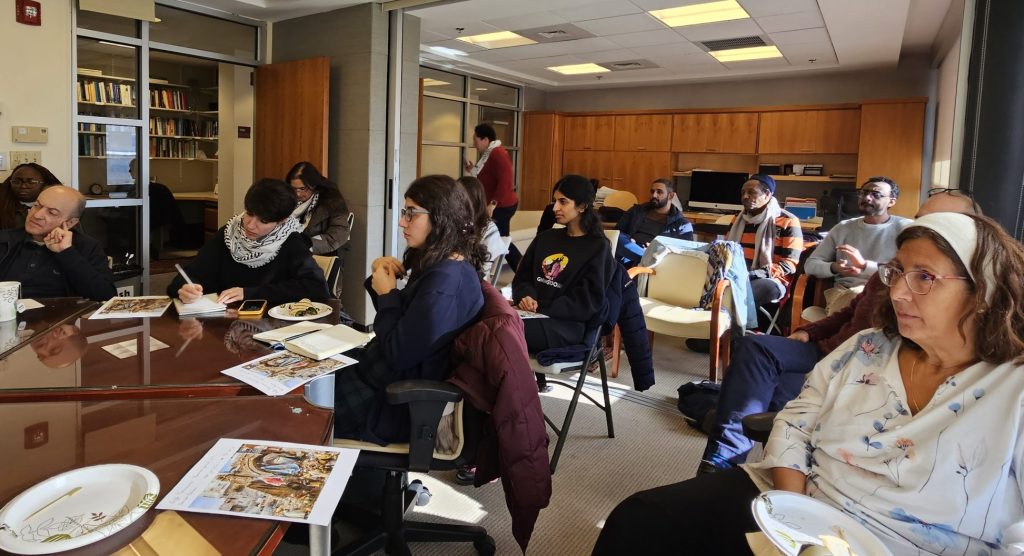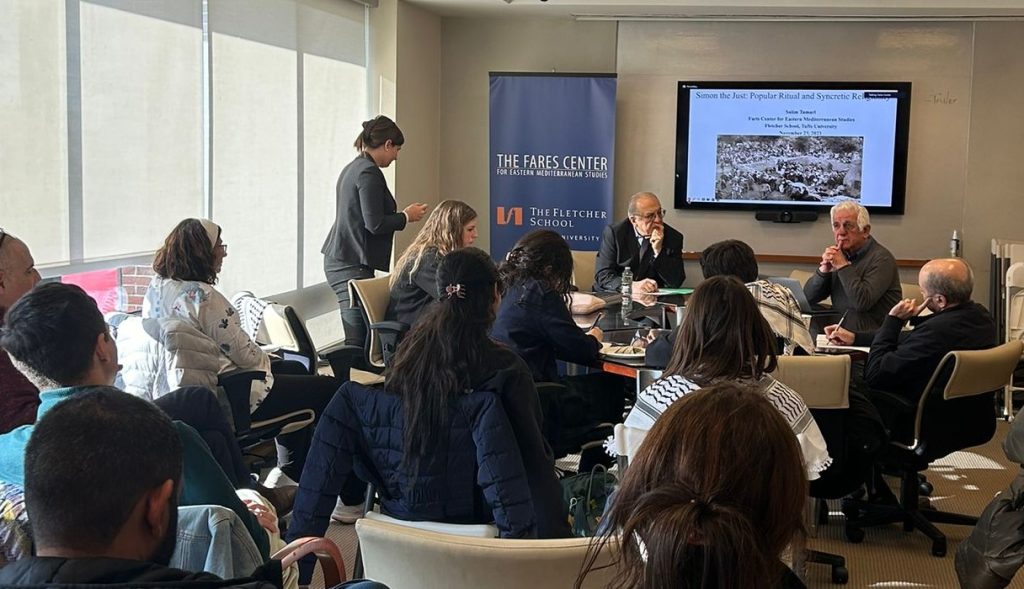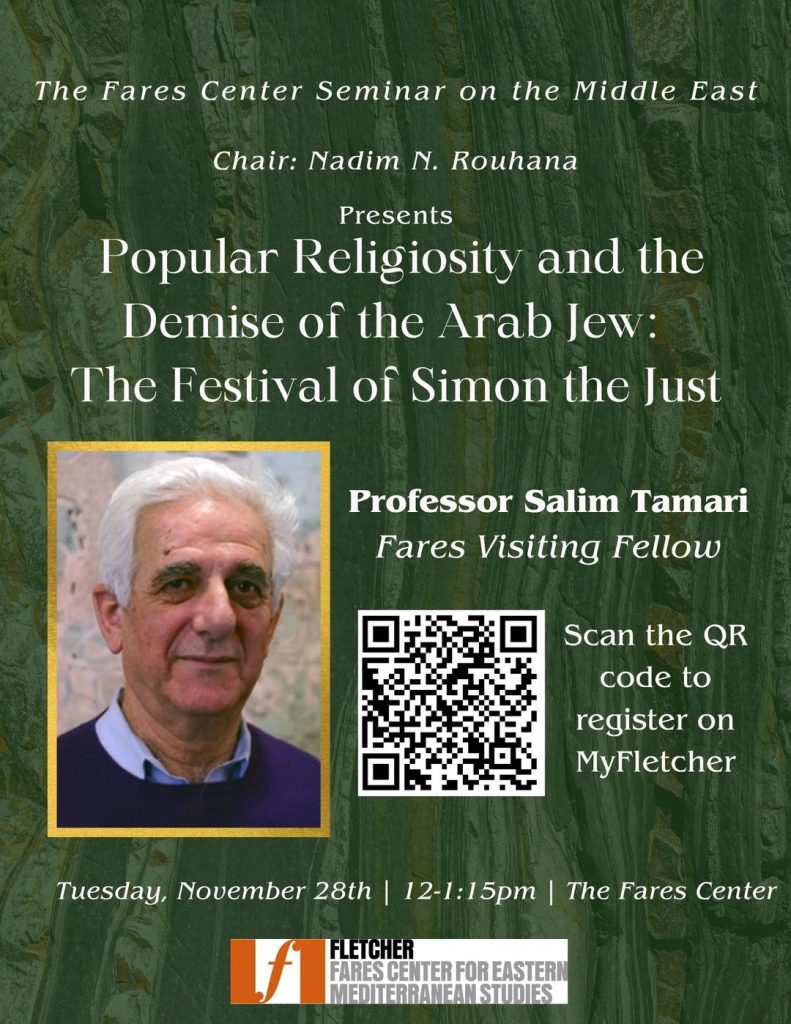Popular religiosity and the demise of the Arab Jew: The Festival of Simon the Just with Professor Salim Tamari
On Tuesday, November 28th, the Fares Center hosted a talk on Popular religiosity and the demise of the Arab Jew: The Festival of Simon the Just with Professor Salim Tamari, Fares Visiting Fellow. The talk was attended by over 20 members of the Fletcher community, who closely followed the riveting lecture given by Tamari.
The issue at hand, is one of many shrines that proliferate all over the Middle East. Al-Khader, for example, also known as Saint George, has been buried 72 times in Lebanon, Syria and Palestine. There are 72 shrines for Al-Khader. He is the patron saint of Palestine and England. Muslim, Christian and Jewish communities have incorporated pre-monotheistic practices in the many parts of the world. In the Holy Land, this syncretism happened during the Crusades, when Richard the Lionheart encountered Salah ad-Din, and they adopted each other’s practices in religious terms.

Tamari takes memoirs, photographic evidence and other historical documents to shed light on how these religious practices change over time. The most important development took place during the Crusades. Salah ad-Din, after the conquest of Jerusalem, began to mobilize peasants in Syria and Palestine to adopt Christian and Jewish shrines, and to mobilize local people against the pilgrims coming from the West. After the crusades ended, the Muslims of the Holy Land continued to welcome Christian and Jewish pilgrims.
This interreligious syncretism was particularly relevant to Nabi Musa (Moses) celebrations. In the Jewish tradition Moses never made it to the Holy Land. The shrine near Jericho became the central celebratory festival every spring. Peasants from Hebron, Nablus, the coastal area, come and celebrate the “fertility season” of spring. People live in the shrine for several weeks in the spring. Each town and village has a flag for Moses. He is the greatest of all festivals that was revived during the Crusades. Nabi Musa became a state-sponsored festival during the Ottoman Times and also during the Mandate. The local armed forces regulated the marches and everything happening in this Festival. In the 1930s, the Palestinian National Movement transformed Nabi Musa into an anti-Zionist symbol.

Other important festivals are Nabi Ayoub in Gaza, Nabi Rubin in South of Jaffa, St. George in Lydda and Simon the Just.
Simon the Just was a festival celebrated by Jews, Muslims and Christians together. In 1948, there were attempts to nationalize it by Israel, but they were unsuccessful. Its nationalization did not happen until the beginning of the 21st century, when the festival was transformed from a festival celebrated by all, into a Zionist symbol and stronghold.
The appropriation of Simon’s shrine as an exclusively Jewish site of worship marks a progression of national-religious claims over several sites that used to be shared – as well as celebrated – by multiple religious communities. These include Rachel’s Tomb (at the northern entrance to Bethlehem), Nabi Samuil (tomb of Samuel, northwest of Jerusalem), and Nabi Rubin (south of Jaffa), a particularly important shrine whose festival brought revelers from the central and southern townships of Palestine every August. The promotion of Jewish claims over joint communal shrines did not take place until two decades after the Israeli occupation of 1967. It coincided with the ascendance of nationalist ideological hegemony over religious parties.


